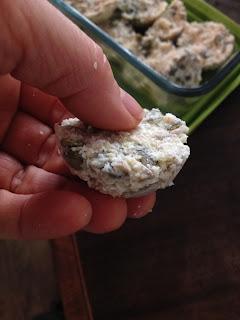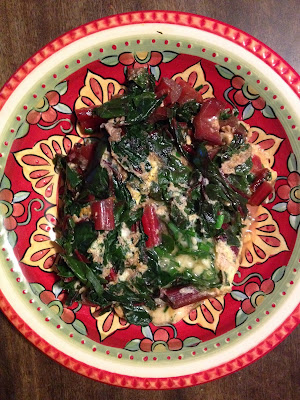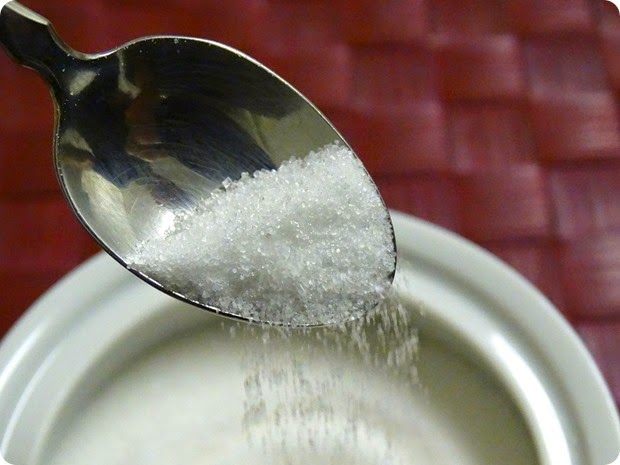Remember those reading comprehension tests in grade school
where you had to identify the Main Idea of a story? That question always
bothered me. The best stories have lots of main ideas! Narrowing it down to
just one didn’t make sense.
Because I was an advanced reader, I only attended Second
Grade for a couple weeks before the adults decided to skip me up to Third.
Unfortunately, matronly Mrs. Williams, my new 3rd grade teacher, was a mean
old beast and I was bullied on the playground by all the bigger-than-me girls.
I had to go last at everything. “Respect your elders!” was the rule.
I pretty much cried my way through 3rd grade, so
my parents took me out of the crowded New Rochelle public school system and off
I went to Riverdale. (This is the Riverdale that Carly Simon attended, not the
one with Betty and Veronica.) At the time, Riverdale was co-ed only through the 4th
grade. After that, school tradition dictated that boys and girls be separated, all the
way through to 12th grade graduation.
Interestingly, when I started Riverdale it was 1968, meaning
cultural values were changing and sex segregation was on the outs. By the time
I hit eighth grade, the entire school became fully coeducational for the first
time.
But in 5th grade, my class was all girls and at
some point in Spring, we had a special event. A heavy, lumbering film projector
and squeaky expandable screen were wheeled into our small classroom and, with
window shades pulled down and door closed tight, we got to see a movie!
The movie was called It’s Wonderful Being a Girl.
It’s Wonderful Being a Girl featured two new teenagers, Libby and Jane, and their experience
around getting their periods. Mostly, the flick was about using menstrual
napkins and how great they were. (I guess tampons weren’t invented yet, or
maybe the sponsors of the film only made pads.) My favorite take-away from the
entire short film was that a hot shower really helps when you feel crampy. This
is true!
It’s also true that I was only 9 years old in 5th
grade. Menarche was in the far distant future for me. So when the lights came
up and our pretty, dark-haired teacher invited those of us with any personal
questions about our bodies to come up to her desk for a private discussion, my
question didn’t have anything to do with puberty. I did have something kind of
embarrassing about my body that I thought maybe Mrs. Begelman could help me
with, though.
“Sometimes I get a little gas bubble in my butt,” I confided,
“and I don’t know what to do when that happens. It makes a funny noise when it
comes out, and sometimes it even smells bad.”
To her credit, Mrs. Begelman succeeded in suppressing a
nascent smile before responding. Her advice, basically, was that I just let the
“gas bubble” come out. “Better out than in,” she said.
What’s remarkable about this story to me is two things.
First Remarkable Thing: I didn’t know the word “fart” in fifth grade! What the
hell?
Second, if intestinal gas was already a concern of mine by
age nine, it can be assumed that IBS-C goes way back in my history.
I’m not sure which of these remarkable facts is the main idea—they kind of go hand in hand.
Anyway, when I started the Sexy Sibo blog, my main purpose
was to chronicle my personal experience in dealing with—and hopefully
solving—the digestive disorder which has plagued me for, evidently, decades. My
primary goal wasn’t to “share my expertise,” let alone “hold forth” to my
audience. But it is also true that I have some expertise to share, both as a
person with lifelong digestive issues and as a trained clinician with a Master
of Science degree in human nutrition who indulges a voracious appetite for
research.
I’m not yet an expert in SIBO, though. No one really is, as
each person with SIBO is so unique. Trial and error is the only way. But maybe
my trial can save you some error down the road. That’s what I’m hoping for.
We’re all in this together!
What I’ve been learning about SIBO is turning my world, and
my diet, upside down. I started out in January (five months ago) giving up my
vegetarian diet and embracing an approach that I believed would work, which I
wrote about
here.
This dietary approach was a great place to start, but
ultimately it didn’t do enough. I’m talking about the classic SIBO-safe diet
(per Dr. Allison Siebecker, et al.) consisting of:
• animal protein (eggs, fish, seafood, poultry, beef)
• lactose-free dairy (aged cheese, 24-hour yogurt, heavy
cream)
• healthy fats (coconut oil, EVOO, butter)
• low-FODMAP vegetables
• low-FODMAP fruits (including bananas, berries, oranges,
pineapple)
• honey
• nuts and seeds (small servings)
• treats: dark chocolate, peanut butter, potato chips,
blended frozen banana “ice cream”
• rarely: low-FODMAP starches (potatoes, rice, gluten-free
bread/crackers)
It turned out that this diet was successful in significantly
reducing the belching and farting that had previously accompanied me through
life 24/7, which was great. But my motility didn’t improve, and my
uncomfortable belly distension, i.e. bloating, continued. Not surprisingly, the
more I strayed into the fruits, “treats” and “rarely” segments of the above
list, the worse my suffering.
So last week, I decided to try something new: a 3-4 day
“ketogenic” diet, followed by a stricter version of the above. A friend of mine
on Facebook suggested this to me, and guess what? It worked! For the first time
in over a year: no bloat. It’s a miracle.
Actually, though, it’s not a miracle. It’s just common
sense. Bloating comes from gas. Gas comes from microbial fermentation of sugars
and starches. If you don’t eat sugars and starches, the microbes don’t have anything to ferment. If
the microbes don’t have anything to ferment, they can’t make gas as a byproduct, hence no bloating.
Keep the sugars and starches out for long enough and eventually, the microbes
will die off.
It’s that simple. In fact, I’d say it’s even the main idea
in understanding SIBO:
If you don’t feed your SIBO,
your microbes don’t eat and you don’t bloat. As long as you have bloating, you
are not making a dent in your SIBO reduction.
So what the hell is a ketogenic diet, you might ask. A
ketogenic diet (keto for short) means you stop using glucose as the primary
energy source for your body by taking all sugars and carbohydrates out of the
diet. In this way, you force the body to get its energy from fats which produces
“ketone bodies”, a breakdown product of fatty acids burned as an alternate
energy source when glucose is not available.
The process is called ketosis and, despite all the hype on
the internet about keto diets, it’s not really a great idea to do long term.
Metabolic acidosis and a weird fruity kind of bad breath, known as “acetone”
breath, are two reasons. (Acetone is a type of ketone.)
Short term, however, a ketogenic approach can be very
healing for people with digestive disorders because it removes all fermentable
foods (sugars and starches) from the diet, cutting off gas and bloating at the
source.
Practically speaking, a keto diet for SIBO means you only
eat animal protein, fat and cooked low-FODMAP green vegetables. (Always avoid salads and raw veggies when your gut
is inflamed—they won’t help.)
My SIBO Keto Diet List
looks like this:
• animal protein (eggs, fish, seafood, poultry, beef)
• lactose-free dairy* (aged cheese, heavy cream)
• pure fats (coconut oil, EVOO, butter)
• low-FODMAP GREEN vegetables (spinach, chard, bok choy,
zucchini, green beans)
*If you want to try this diet, include dairy only if
tolerated. I am lucky in that hard, aged cheeses digest beautifully for me,
especially raw milk cheese from goat or sheep milk. I only use heavy cream in small quantities, for
coffee or tea. Plain lactose-free yogurt with no additives (24-hour yogurt or
Greek style) also could be on the list but I don’t do as well with yogurt, so
I’m keeping it out for now. The cheese is a lifesaver, though!
My plan was to do this for 3-4 days but when I woke up the
morning of Day 4 with a flat stomach for the first time in maybe a year, I
didn’t want to stop! So today, I am essentially on Day 10 of this very low carb
approach. I’ve had a small salad twice and have tested two low-FODMAP orange
veggies—roasted butternut squash and raw grated carrots—once each. I did okay
with both but am not in a rush to repeat. Even though the squash tasted SO
SWEET my tongue thought it was in heaven, I think it’s good to keep coming home
to baseline. It feels safe at baseline and I have to say, I really like not
having symptoms!
Jasmine rice might be the next thing I test. But (referring
back to the original list) I’m going to stay away from most everything below
the low-FODMAP vegetables line, including most fruit with a few exceptions
(lemons and limes for sure, and possibly avocado and coconut which I will test
when I am solidly symptom free.)
So for those of you who are still reading, here’s my new
food list for the next three months. By the way, this list functions in tandem
with Dr. Norm Robillard’s Fast Tract Digestion: IBS system, a quantitative approach which utilizes the
fermentation potential (FP) values of different foods to reduce IBS symptoms.
Dr. Robillard is the one who figured out the FP of Jasmine rice is zero, making it safe for many SIBO peeps.
No-Bloat Food List for Meaningful SIBO Reduction
• animal protein (eggs, fish, seafood, poultry, beef)
• lactose-free dairy (aged cheese, heavy cream, 24-hour or
pure Greek yogurt)
• healthy fats (coconut oil, EVOO, butter)
• low-FODMAP vegetables: primarily cooked, mostly green plus
some orange
• Jasmine rice (limit to ½ cup serving per meal)
• lemons and limes
• allowed sweeteners: liquid stevia drops, pure stevia,
erythritol
With this plan, I hope to make some REAL progress in getting
my symptoms and my SIBO under control. It sounds tough, but actually, it’s not
so bad. To paraphrase Kate Moss, “Nothing tastes as good as symptom-free
feels.”
I guess that’s the point for me, the bloody Main Idea, if
you will: I want to feel better ALL THE TIME. Feeling better calls for figuring out through trial and
error what works, and being mature enough to actually do it.
This is where I’ve gotten stuck, repeatedly through the
years. The maturity thing. I’m a rebel at heart. I don’t like to follow rules,
even rules I make for myself.
But I’m not a kid anymore. I’m not like Libby and Jane,
navigating a turbulent adolescence. Au contraire, I’m the mother of two young
men in their 20s! A full-grown woman who hasn’t had a monthly cycle since
October! I’m navigating menopause now, and the sea is calming. I love myself
and I want to heal. I think I’m finally ready. Wish me clear skies, fair winds
and a steady rudder, will you? Wish me bon voyage, and feel welcome on board.
xo Diana
























